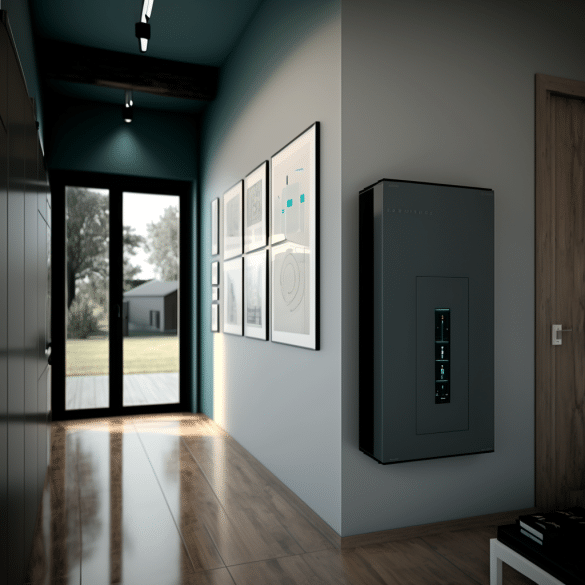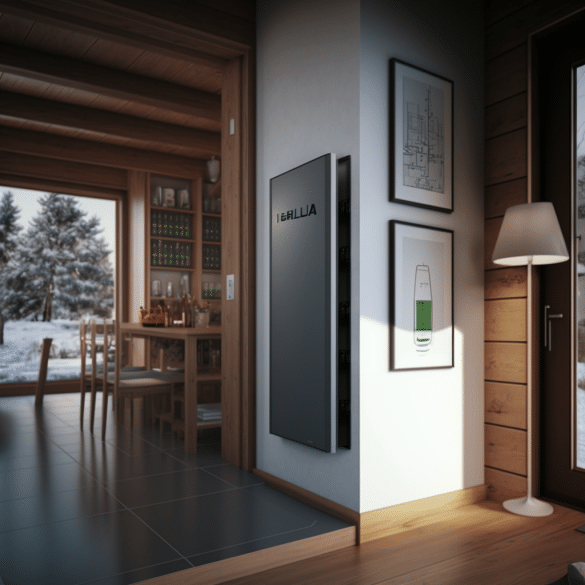Are you ready to join the green energy revolution? With a DIY Powerwall, you can create a cost-effective, sustainable, and reliable energy storage system right in your backyard! In this comprehensive guide, we’ll walk you through the process of building your very own DIY Powerwall, empowering you to take control of your energy storage needs and reduce your carbon footprint.
What is a DIY Powerwall?
A DIY Powerwall is a custom-built home energy storage system designed to store electricity generated from renewable sources like solar panels or wind turbines. It can be tailored to your specific needs, providing an affordable and eco-friendly alternative to traditional energy storage solutions.
Why Build a DIY Powerwall?
There are several compelling reasons to build a DIY Powerwall:
- Cost savings: By building your own Powerwall, you can significantly reduce your energy storage costs compared to purchasing a pre-built system.
- Sustainability: Creating a DIY Powerwall allows you to utilize renewable energy sources, reducing your reliance on fossil fuels and shrinking your carbon footprint.
- Customizability: A DIY Powerwall can be tailored to your unique energy needs and preferences, ensuring you have the perfect solution for your home.
- Independence: Building your own Powerwall gives you greater control over your energy storage and usage, contributing to a more resilient and self-sufficient lifestyle.
Building Your DIY Powerwall: A Step-by-Step Guide
Step 1: Plan and Design Your System
The first step in building a DIY Powerwall is to plan and design your system. Consider the following factors:
- Your energy needs and consumption patterns
- The size and capacity of your solar panel system
- The desired lifespan and cycle life of your battery
- Any local regulations or permitting requirements
- Your budget and desired level of investment
Once you’ve determined your needs, design your system accordingly, selecting the appropriate battery type, inverter, charge controller, and other components.
Step 2: Gather Your Materials
After designing your system, gather the necessary materials and components. This may include:
- Batteries (e.g., lithium-ion, lead-acid, or LFP batteries)
- Inverter
- Charge controller
- Battery management system (BMS) or Energy Management System (EMS)
- Wiring, fuses, and connectors
- Mounting hardware and enclosures
Step 3: Assemble Your DIY Powerwall
With your materials gathered, it’s time to assemble your DIY Powerwall. Follow these general steps:
- Install the batteries in a secure and well-ventilated enclosure, ensuring proper ventilation and temperature control.
- Connect the batteries to the BMS or EMS, following the manufacturer’s instructions for proper wiring and configuration.
- Connect the inverter to the battery bank and the charge controller to the renewable energy source (e.g., solar panels or wind turbine).
- Install any necessary safety features, such as fuses and circuit breakers, to protect your system and prevent solar panel fires.
Step 4: Test and Monitor Your System
Once your DIY Powerwall is assembled, test the system to ensure proper functionality. Check for any potential issues, such as:
- Loose connections
- Faulty wiring
- Inadequate ventilation
Additionally, monitor your system’s performance over time. Keep an eye on the efficiency and capacity of your batteries, ensuring they maintain their cycle life. Regular maintenance checks will help maximize the lifespan of your DIY Powerwall and optimize its performance.
Step 5: Integrate Your DIY Powerwall with Your Home’s Energy System
Once you’re confident in the performance and safety of your DIY Powerwall, integrate it with your home’s energy system. This may involve connecting your Powerwall to your home’s electrical panel, enabling seamless energy flow between your renewable energy source, storage system, and household appliances.
Consider implementing an Energy Management System (EMS) to optimize your energy usage and storage. An EMS can help monitor and control your energy consumption, ensuring your DIY Powerwall is used efficiently and effectively.
DIY Powerwall Safety Tips
While building a DIY Powerwall can be an empowering and rewarding experience, it’s crucial to prioritize safety throughout the process. Keep the following safety tips in mind:
- Educate yourself: Familiarize yourself with electrical and energy storage concepts, ensuring you have a solid understanding of the components and processes involved in building a DIY Powerwall.
- Follow local regulations: Be aware of any local permitting requirements and regulations related to home energy storage and renewable energy systems. Always adhere to these guidelines to ensure the safety and legality of your DIY Powerwall.
- Use appropriate safety gear: Wear proper safety gear, such as gloves and safety goggles, when working with electrical components and assembling your DIY Powerwall.
- Ensure proper ventilation: Batteries can generate heat and potentially hazardous gases, so ensure your DIY Powerwall has adequate ventilation and temperature control to prevent accidents or fires.
Expanding Your DIY Powerwall: Scalability and Future-Proofing
As your energy needs and goals evolve, you may want to expand or upgrade your DIY Powerwall. Here are some tips on how to make your system scalable and future-proof:
- Choose modular components: Opt for modular components that can be easily added, removed, or replaced, ensuring flexibility as your needs change. This can be especially useful when selecting batteries, inverters, and charge controllers.
- Plan for additional capacity: When designing your DIY Powerwall, consider the possibility of adding more batteries or renewable energy sources in the future. Ensure your system has the capacity to accommodate these additions without major overhauls.
- Stay up-to-date on emerging technologies: Keep an eye on the latest advancements in renewable energy and energy storage technologies. This will help you identify opportunities to improve your DIY Powerwall’s efficiency and performance, as well as reduce costs and environmental impact.
- Integrate smart technologies: Embrace the power of technology by incorporating smart devices and software into your DIY Powerwall. For example, consider implementing a microgrid or integrating your system with home automation tools for seamless energy management and monitoring.
DIY Powerwall Community and Resources
Building a DIY Powerwall can be a challenging yet rewarding endeavor, and you don’t have to do it alone. The DIY Powerwall community is a valuable resource for support, advice, and inspiration. Here are some ways to connect with fellow enthusiasts and experts:
- Online forums: Join online forums and discussion groups dedicated to DIY Powerwalls and renewable energy. These platforms provide a space for users to share their experiences, ask questions, and offer advice.
- Social media: Follow DIY Powerwall builders and renewable energy enthusiasts on social media platforms like YouTube, Instagram, and Facebook. These channels often feature detailed guides, tutorials, and updates on the latest advancements in energy storage technology.
- Local workshops and meetups: Participate in local workshops, meetups, or conferences focused on renewable energy and DIY Powerwalls. These events can offer valuable hands-on learning experiences and networking opportunities.
By tapping into the wealth of knowledge and experience within the DIY Powerwall community, you’ll be better equipped to tackle the challenges and reap the rewards of building your own home energy storage system.


